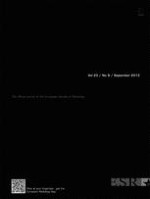Published in:

01-09-2013 | Computed Tomography
CT perfusion technique for assessment of early kidney allograft dysfunction: preliminary results
Authors:
A. Helck, M. Wessely, M. Notohamiprodjo, U. Schönermarck, E. Klotz, M. Fischereder, F. Schön, K. Nikolaou, D. A. Clevert, M. Reiser, C. Becker
Published in:
European Radiology
|
Issue 9/2013
Login to get access
Abstract
Objectives
To assess the benefit of quantitative computed tomography (CT) perfusion for differentiating acute tubular necrosis (ATN) and acute rejection (AR) in kidney allografts.
Methods
Twenty-two patients with acute kidney allograft dysfunction caused by either AR (n = 6) or ATN (n = 16) were retrospectively included in the study. All patients initially underwent a multiphase CT angiography (CTA) protocol (12 phases, one phase every 3.5 s) covering the whole graft to exclude acute postoperative complications. Multiphase CT dataset and dedicated software were used to calculate renal blood flow. Renal biopsy or clinical course of disease served as the standard of reference. Mean effective radiation dose and mean amount of contrast media were calculated.
Results
Renal blood flow values were significantly lower (P = 0.001) in allografts undergoing AR (48.3 ± 21 ml/100 ml/min) compared with those with ATN (77.5 ± 21 ml/100 ml/min). No significant difference (P = 0.71) was observed regarding creatinine level with 5.65 ± 3.1 mg/dl in AR and 5.3 ± 1.9 mg/dl in ATN. The mean effective radiation dose of the CT perfusion protocol was 13.6 ± 5.2 mSv; the mean amount of contrast media applied was 34.5 ± 5.1 ml. All examinations were performed without complications.
Conclusion
CT perfusion of kidney allografts may help to differentiate between ATN and rejection.
Key points
• Quantitative CT perfusion of renal transplants is feasible.
• CT perfusion could help to non-invasively differentiate AR from ATN.
• CT perfusion might make some renal biopsies unnecessary.